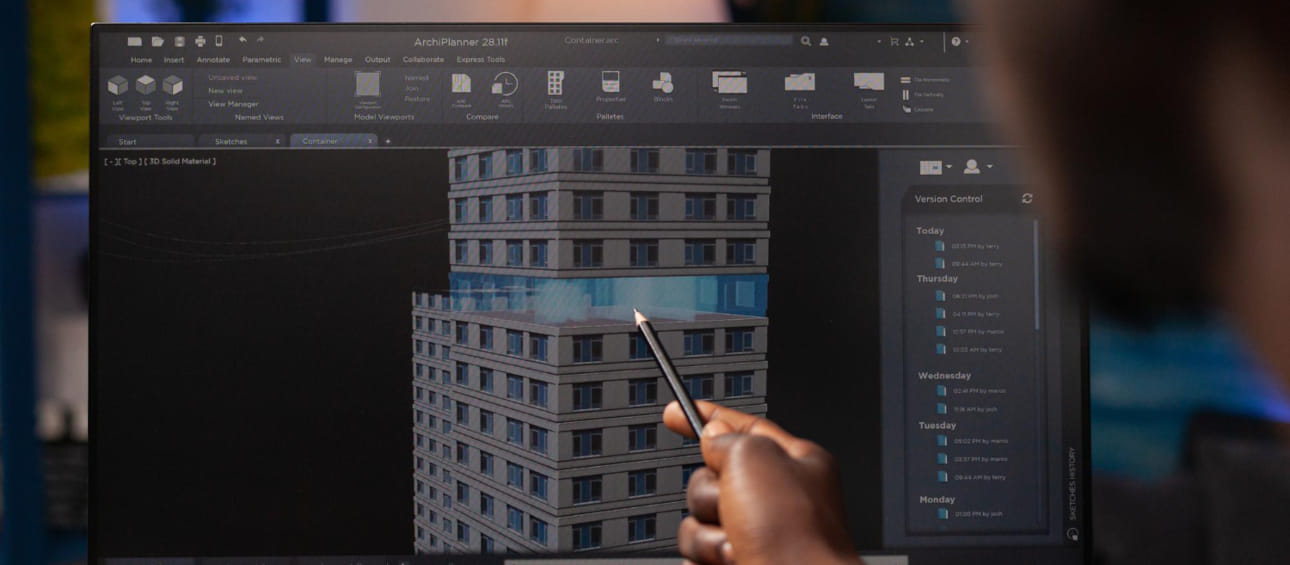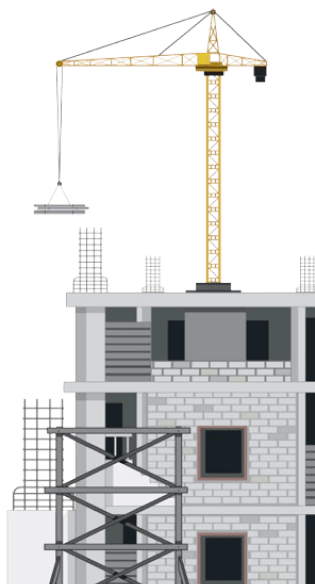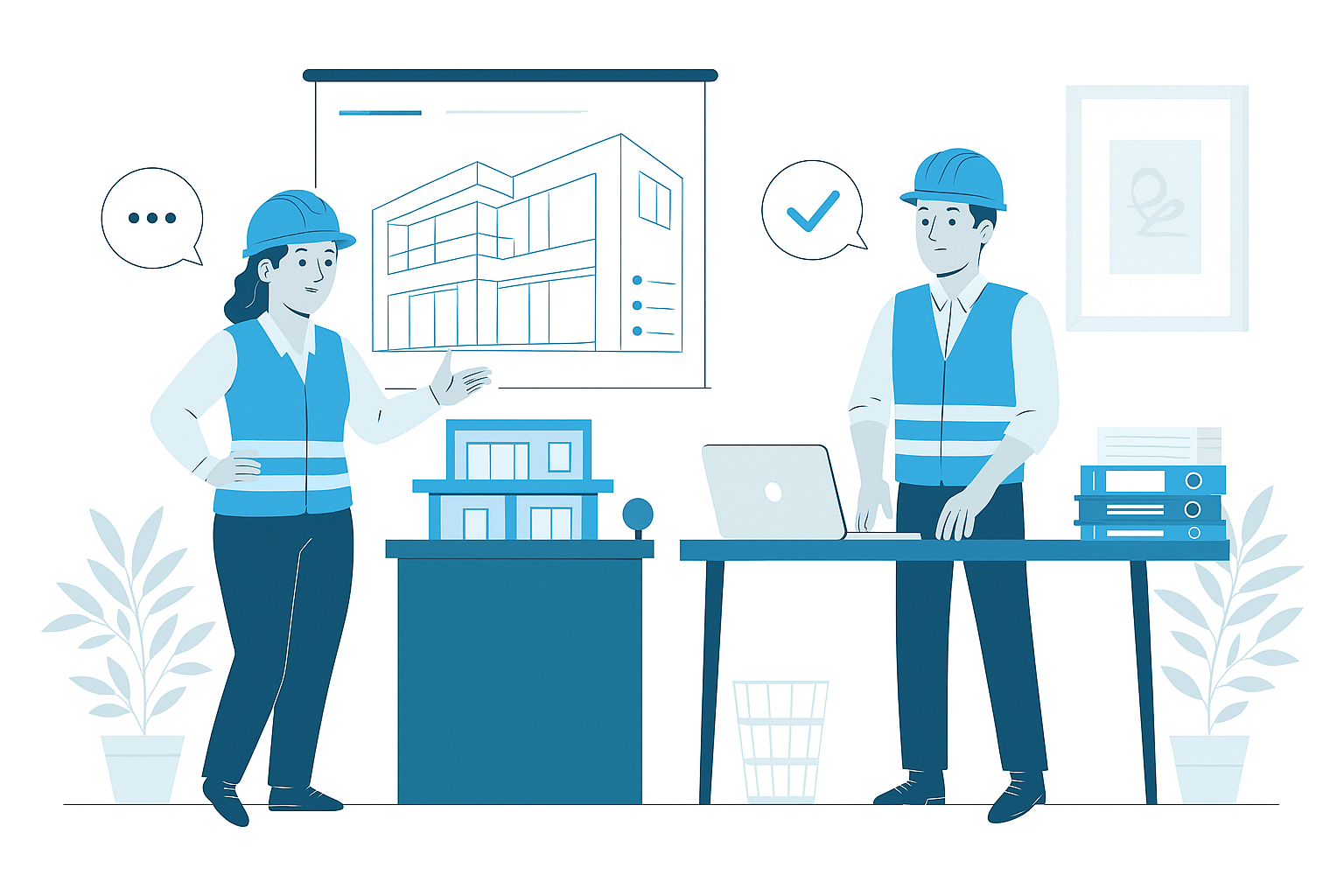COBie Data Services
In modern facility management and building operations, effective information handover has become essential for long-term operational efficiency and asset performance. Our specialized COBie (Construction Operations Building Information Exchange) services develop comprehensive digital documentation of building assets including spaces, equipment, and systems in standardized formats that support operations and maintenance activities. This structured approach captures critical facility information from design and construction phases and transforms it into organized, accessible data that integrates seamlessly with facility management systems, creating a valuable bridge between project delivery and long-term building operations.

Facility Data Management
- Structured documentation of building spaces, systems, equipment, and components
- Comprehensive asset information extraction from BIM models and construction data
- Standardized COBie format compatible with facility management systems
- Detailed equipment attributes including maintenance and warranty information
- Seamless information transfer from construction completion to building operations
Comprehensive Facility Information Development
Our COBie data services implement a structured development approach that creates comprehensive facility information packages with appropriate asset organization and operational attributes. We begin with detailed requirements analysis, working with facility teams to understand management systems, operational priorities, and information needs that establish specific COBie development parameters. Based on these requirements, we develop tailored data structures with appropriate worksheets, field definitions, and relationship mapping that support effective facility management implementation.
The systematic data collection process addresses different facility systems in logical sequence, gathering information about spaces, zones, equipment, components, systems, and associated documentation with appropriate attributes and relationships. Each asset category receives proper identification, classification, location referencing, and technical attributes based on industry standards and operational requirements. Throughout development, our quality assurance protocols validate information completeness, verify technical accuracy, and confirm operational applicability ensuring COBie data effectively supports management needs. The final deliverables are formatted into standardized spreadsheets or digital exchanges with appropriate worksheets, data fields, and relationship structures following COBie standard requirements while maintaining compatibility with specific facility management systems. This comprehensive approach creates structured facility documentation that bridges construction completion and operational management, delivering valuable information resources that enhance long-term building performance throughout the complete operational lifecycle.
Strategic Benefits of COBie Implementation
Implementing comprehensive COBie data services delivers substantial advantages throughout facility operations, maintenance management, and asset lifecycle planning. The primary benefit comes through complete digital handover, where facilities receive comprehensive equipment information, location data, technical specifications, and maintenance requirements without the traditional information loss that occurs during project transition. This comprehensive data transfer typically reduces facility startup time by 20-30%, eliminates costly information rediscovery, and substantially improves operational readiness compared to conventional paper documentation.
For maintenance management, structured equipment data, warranty information, preventive maintenance requirements, and technical specifications enable immediate CMMS population, maintenance schedule development, and service program implementation. These capabilities typically improve maintenance efficiency by 15-25%, extend equipment lifespan, and significantly enhance both operational reliability and resource utilization. Asset management benefits from complete inventory documentation, location tracking, system relationships, and component identification that collectively improve equipment tracking, replacement planning, and lifecycle management throughout facility operations. Throughout the complete operational lifecycle, these benefits combine to reduce facility management costs by 8-12%, improve operational efficiency, and substantially enhance building performance compared to traditionally documented facilities. By providing comprehensive, structured facility information in directly usable formats, COBie deliverables transform traditional building handover into strategic operational intelligence that significantly improves long-term facility management outcomes.
Applications of COBie Services
Commercial & Corporate Facilities
Comprehensive COBie implementation for office buildings, corporate headquarters, and commercial properties with complex operational requirements and management systems. Our commercial facility documentation addresses diverse building systems, tenant-specific equipment, multi-zone management, and specialized operational needs with appropriate data organization and system integration. These structured information packages support efficient building operations, enhance equipment management, and improve maintenance effectiveness throughout these dynamic commercial environments.
Healthcare & Critical Facilities
Specialized COBie development for hospitals, medical centers, data centers, and mission-critical environments with stringent operational requirements and complex system documentation. Our critical facility deliverables address medical equipment, specialized systems, redundant infrastructure, and regulated components with appropriate technical attributes and maintenance parameters. These comprehensive data packages support the demanding operational requirements, regulatory compliance, and performance monitoring necessary for these essential facilities where equipment reliability directly impacts operational outcomes.
Educational & Campus Environments
Integrated COBie implementation for university buildings, educational facilities, research centers, and campus environments with diverse building systems and maintenance requirements. Our educational facility documentation addresses building equipment, research infrastructure, specialized systems, and campus integration with appropriate data structures and organizational mapping. These comprehensive information packages support both efficient operations and preventive maintenance while providing valuable documentation for facilities management teams responsible for diverse campus building portfolios.
Government & Institutional Facilities
Specialized COBie development for government buildings, public facilities, institutional properties, and municipal assets with specific documentation requirements and operational standards. Our government facility deliverables address standardized asset tracking, equipment documentation, space classification, and system organization following specific governmental requirements and facility management standards. These structured data packages support transparent asset management, efficient maintenance operations, and effective space utilization throughout these important public facilities and institutional environments.
Why Choose Us
Professional COBie Services That Enhance Facility Management and Operations
01
Expert Team
Certified BIM specialists with extensive experience across architectural, MEP, and facade modeling projects
02
Comprehensive Services
End-to-end BIM solutions from initial modeling to coordination, documentation, and facility management
03
Quality Assurance
Rigorous quality control processes ensuring clash-free models, accurate documentation, and seamless collaboration
04
Dedicated Support
Responsive team available to assist throughout your project lifecycle, ensuring timely solutions and continuous assistance

Know More
Frequently Asked Questions
COBie (Construction Operations Building Information Exchange) is a standardized data format that captures essential information about building assets including spaces, systems, equipment, and components to support operations and maintenance activities throughout a facility's lifecycle. Unlike traditional building documentation that focuses primarily on construction, COBie specifically structures data for long-term operational use, creating a comprehensive digital handover package that bridges the critical information gap between construction and facility management. This structured approach has become increasingly vital as organizations recognize that approximately 80% of a building's total lifecycle cost occurs during operations, making effective data transfer essential for long-term efficiency. COBie provides systematic organization of equipment information, location data, maintenance requirements, warranty details, and operational attributes in a standardized format that integrates seamlessly with facility management systems. Industry research shows that facilities implementing comprehensive COBie data handover typically experience 15-25% reduced startup costs, 20-30% improved maintenance efficiency, and significant enhancements in both operational reliability and asset longevity. Beyond these quantifiable benefits, COBie provides enhanced maintenance planning, improved equipment tracking, better capital planning, and more effective resource allocation that collectively transform reactive facility management into proactive building optimization throughout the complete operational lifecycle.
Our COBie data development process follows a structured methodology that systematically creates comprehensive facility information packages with appropriate asset organization and operational attributes. We begin with detailed requirements analysis, working with facility teams to understand management systems, operational priorities, and information needs that establish specific COBie development parameters and delivery objectives. Initial planning defines appropriate information organization, classification systems, naming conventions, and data structures based on facility type and management approach. The implementation strategy establishes whether COBie data will be progressively developed throughout design and construction or extracted from completed BIM models at project handover, determining workflow integration and quality control processes. For BIM-integrated approaches, we develop custom shared parameters, specialized schedules, data validation rules, and extraction templates that support systematic information collection and organization throughout project development. The comprehensive data collection process addresses different facility systems in logical sequence, gathering information about spaces, zones, equipment, components, systems, and associated documentation with appropriate attributes and relationships. For each asset category, we implement appropriate identification, classification, location referencing, and technical attributes based on industry standards and operational requirements. Data validation employs comprehensive verification protocols including completeness checking, format validation, relationship verification, and systematic sampling that ensure information accuracy and usability. The organized COBie data packages are formatted into deliverable spreadsheets or digital exchanges with appropriate worksheets, data fields, and relationship structures following COBie standard requirements. Throughout development, collaborative review with facility teams confirms information applicability, completeness, and alignment with operational needs. This systematic approach ensures all building assets receive appropriate documentation regardless of complexity while maintaining consistent organization and reliable information throughout the complete facility data package.
Our COBie services address comprehensive facility information categories with appropriate data organization and attribute definition based on operational requirements and industry standards. For spatial organization, we document facilities, floors, spaces, and zones with proper identification, classification, dimensions, and relationships that establish the complete spatial context for all building assets. Equipment documentation includes mechanical units, electrical components, plumbing fixtures, fire protection devices, conveyance systems, and specialized systems with detailed information about manufacturers, models, serial numbers, installation dates, and technical specifications. Component tracking addresses maintainable items, replaceable elements, serviceable parts, and critical assemblies with appropriate identification and relationship mapping to parent equipment. System documentation establishes logical groupings, operational relationships, and service distributions that define how components function together to deliver building services. For maintenance support, we capture warranty information, preventive maintenance schedules, spare part requirements, and service procedures with appropriate frequency, duration, and resource requirements. Contact information documents manufacturers, vendors, contractors, and service providers with proper company data, representative details, and communication information. Resource documentation includes operation manuals, maintenance guides, technical submittals, warranty certificates, and commissioning reports with proper file references and access methods. For performance tracking, we establish appropriate attributes for energy consumption, resource utilization, operational metrics, and sustainability factors that support performance monitoring and optimization. Each information category receives appropriate development based on facility requirements, complexity, and management objectives, creating comprehensive digital documentation that supports effective operations and maintenance throughout the complete building lifecycle regardless of facility type or operational approach.
COBie deliverables deliver substantial operational benefits and management improvements through comprehensive asset documentation and structured information organization. The primary operational advantage comes through complete digital handover, where facilities receive comprehensive equipment information, location data, technical specifications, and maintenance requirements without the traditional information loss that occurs during project transition. This comprehensive data transfer typically reduces facility startup time by 20-30%, eliminates costly information rediscovery, and substantially improves operational readiness compared to conventional paper documentation. For maintenance management, COBie provides structured equipment data, warranty information, preventive maintenance requirements, and technical specifications that enable immediate CMMS population, maintenance schedule development, and service program implementation. These capabilities typically improve maintenance efficiency by 15-25%, extend equipment lifespan, and significantly enhance both operational reliability and resource utilization. Asset management benefits from complete inventory documentation, location tracking, system relationships, and component identification that collectively improve equipment tracking, replacement planning, and lifecycle management throughout facility operations. When emergency situations arise, readily available equipment information, system relationships, location data, and service contacts improve response capabilities, reduce downtime, and enhance resolution effectiveness. Throughout the complete operational lifecycle, these benefits combine to reduce facility management costs by 8-12%, improve operational efficiency, and substantially enhance building performance compared to traditionally documented facilities. By providing comprehensive, structured facility information in directly usable formats, COBie deliverables transform traditional building handover into strategic operational intelligence that significantly improves long-term facility management outcomes regardless of building type or operational requirements.
Our COBie deliverables follow standardized structure and component organization based on industry specifications and best practices that ensure consistency, completeness, and compatibility with facility management systems. The core deliverable structure includes spreadsheet workbooks with multiple worksheets organizing different information categories and establishing proper relationships between facility elements. The Contact worksheet documents all organizations and individuals involved with facility delivery including designers, contractors, vendors, manufacturers, and service providers with appropriate company information and contact details. Facility worksheets establish basic building information, project attributes, and site characteristics that provide overall facility context. The Floor worksheet documents building levels, vertical divisions, and physical organization with proper identification and elevation data. Space worksheets catalog all rooms, areas, and defined spaces with appropriate numbers, names, functions, and measurements establishing the complete spatial inventory. Type worksheets document categories of equipment and components with manufacturer information, model details, warranty data, and general specifications that apply to multiple installed instances. Component worksheets record actual installed equipment items with specific serial numbers, installation dates, location references, and barcode information linked to appropriate type definitions. System worksheets establish logical groupings, operational relationships, and service distributions defining how components function together to deliver building services. For maintenance support, Spare worksheets document replacement parts, Job worksheets define maintenance procedures, and Resource worksheets catalog documents, manuals, and warranties with proper file references. Attribute worksheets capture additional custom properties not accommodated in standard fields. Throughout this structure, primary worksheets contain core information while relationship worksheets including Space-Component, Component-System, and Type-Component establish proper connections between different elements. This standardized organization creates comprehensive facility documentation with proper relationships, consistent attributes, and structured information that seamlessly integrates with operational systems while providing complete asset documentation regardless of facility complexity or management approach.
Our COBie deliverables support comprehensive integration with diverse facility management systems through standardized data structures, compatible formats, and implementation strategies that ensure effective information transfer and utilization. For direct system integration, we format COBie data according to specific CMMS requirements including IBM Maximo, TMA Systems, MicroMain, AkitaBox, eMaint, and other platforms with appropriate field mapping, import templates, and data organization that support automated information transfer. This direct compatibility typically reduces system setup time by 40-60% while significantly improving data accuracy and completeness compared to manual entry methods. For specialized FM software including Archibus, FM:Systems, iOFFICE, and IWMS platforms, we implement compatible COBie structures with proper relationship modeling, attribute organization, and data formatting that support comprehensive system population across space management, asset tracking, and maintenance functions. When EAM systems including Oracle EAM, SAP PM, or specialized enterprise platforms are used, we provide appropriate data transformations, field mappings, and integration support that bridge COBie formats with specific enterprise requirements. For BIM-integrated facility management including Autodesk Tandem, Bentley AssetWise, or Invicara platforms, we establish proper data linkages, model relationships, and information mapping that maintain connections between graphical models and operational data. Throughout implementation, we provide integration documentation including field mappings, data dictionaries, relationship diagrams, and transfer protocols that support effective system configuration and data utilization. By delivering COBie information in formats directly compatible with specific management platforms, our deliverables support immediate operational implementation without extensive data transformation or manual reentry, creating seamless information continuity from design and construction into long-term facility operations regardless of specific system requirements or management approach.
Effective COBie development follows best practices regarding both timing and stakeholder involvement that maximize information quality, completeness, and operational value throughout the facility delivery process. The optimal approach implements progressive COBie development beginning during design phases rather than treating it as an end-of-project extraction exercise, establishing data structures, naming conventions, and information requirements early in project development. This early planning typically involves facility managers, building owners, and operational teams collaborating with design professionals to define specific information needs, classification systems, and attribute requirements that will support long-term operational objectives beyond basic construction documentation. During design development, architects and engineers progressively incorporate equipment information, space attributes, and system characteristics within BIM environments following established COBie structures and naming conventions that maintain consistent documentation standards. As projects transition to construction, general contractors, specialty contractors, and equipment vendors contribute installation information, serial numbers, warranty details, and maintenance data through structured submittal processes and information templates that capture operational attributes beyond traditional construction documentation. Throughout implementation, commissioning agents, system integrators, and facility startup teams validate information completeness, verify technical accuracy, and confirm operational applicability ensuring COBie data effectively supports management requirements. This collaborative, progressive approach typically improves information quality by 30-40%, enhances operational applicability, and significantly reduces end-of-project documentation burdens compared to retrospective extraction methods. By involving stakeholders from both delivery and operations throughout development, COBie implementation becomes an integrated project workflow rather than a separate documentation exercise, creating comprehensive facility information that effectively bridges construction completion and operational management throughout the building lifecycle.
Our COBie services address common implementation challenges through structured methodologies, proactive planning, and specialized approaches that ensure successful delivery regardless of project complexity or team experience. The primary challenge involves inconsistent naming conventions, where different disciplines use varied terminology, identification systems, and classification approaches that create confusion in consolidated documentation. We address this through early standardization establishing unified naming structures, consistent classification systems, and clear identification protocols before information development begins, typically reducing naming conflicts by 80-90% compared to unplanned implementations. Information completeness presents significant challenges, particularly for equipment specifications, maintenance requirements, and warranty details that require manufacturer input beyond design documentation. Our structured submittal management implements specialized templates, information checklists, and validation processes that clearly communicate data requirements to vendors and contractors, substantially improving information capture during procurement and installation. For implementation timing, the tendency to treat COBie as an end-of-project extraction creates significant data quality and completeness issues. Our progressive development approach establishes phased delivery, milestone validation, and continuous information enhancement throughout project execution rather than retrospective compilation. When BIM quality varies between disciplines or contains inadequate data development, our assessment protocols identify specific deficiencies, implement targeted enhancement strategies, and utilize supplemental information sources that address documentation gaps without complete model rebuilding. Technical limitations in software tools or exchange methods frequently create workflow barriers and information loss. Our specialized techniques implement custom parameters, extraction scripts, data transformation tools, and quality verification processes that maintain information integrity throughout development and delivery. By systematically addressing these common challenges through proactive planning, structured methodologies, and specialized workflows, our COBie implementation delivers comprehensive facility information regardless of project complexity, team experience, or technical constraints, creating valuable operational documentation that significantly enhances long-term facility management outcomes throughout the complete building lifecycle.
Wide Range of SERVICES
Other Specialized Services
Discover our advanced specialized BIM services addressing unique project requirements and specific industry applications with tailored solutions.
Create digital twins of buildings and facilities that combine BIM data with real-time information for improved operations and maintenance.

Develop custom Revit families for building components, furniture, equipment, and specialized elements to support detailed BIM modeling.

Extract precise material quantities directly from BIM models to support cost estimation, procurement, and construction planning.









